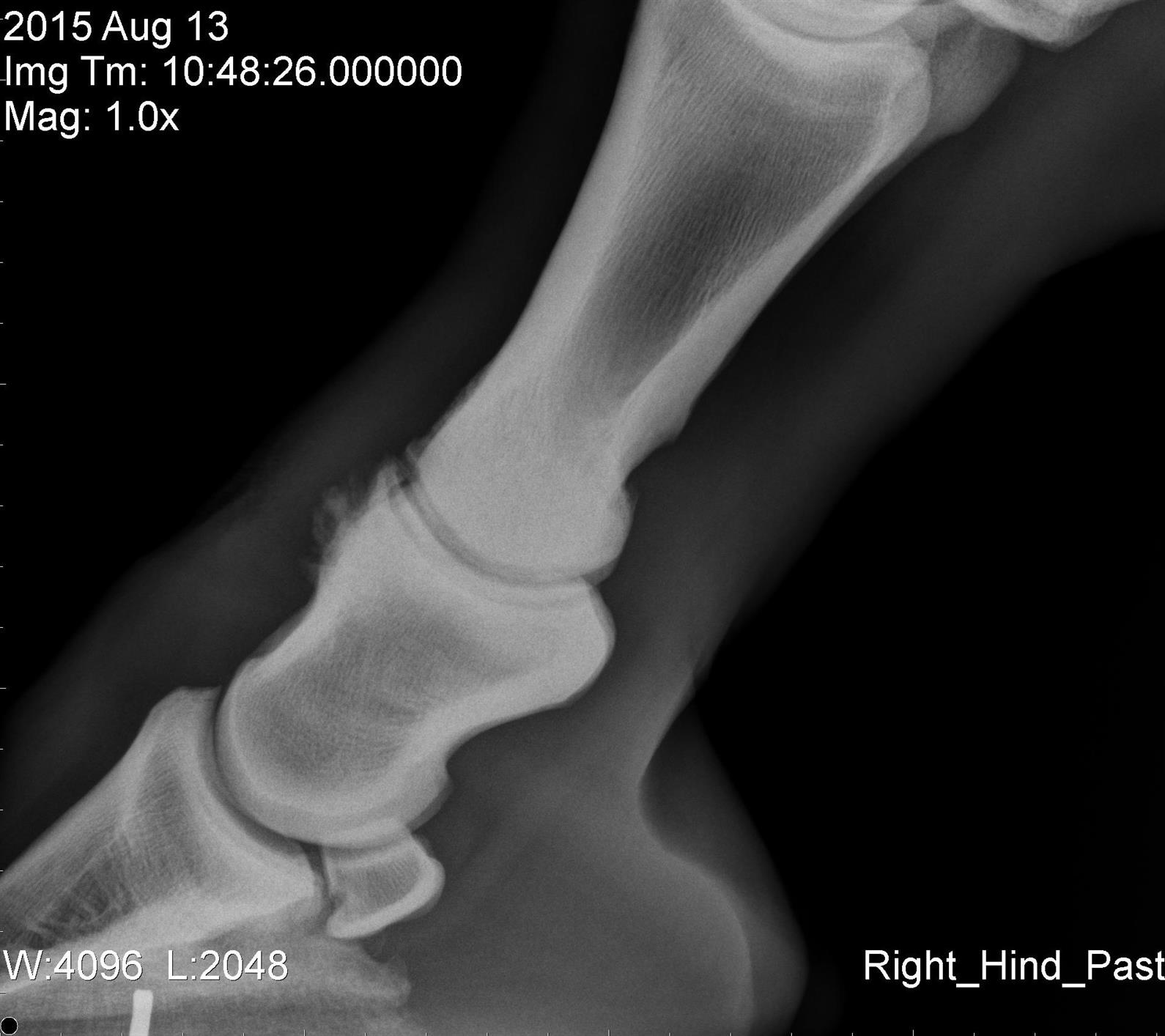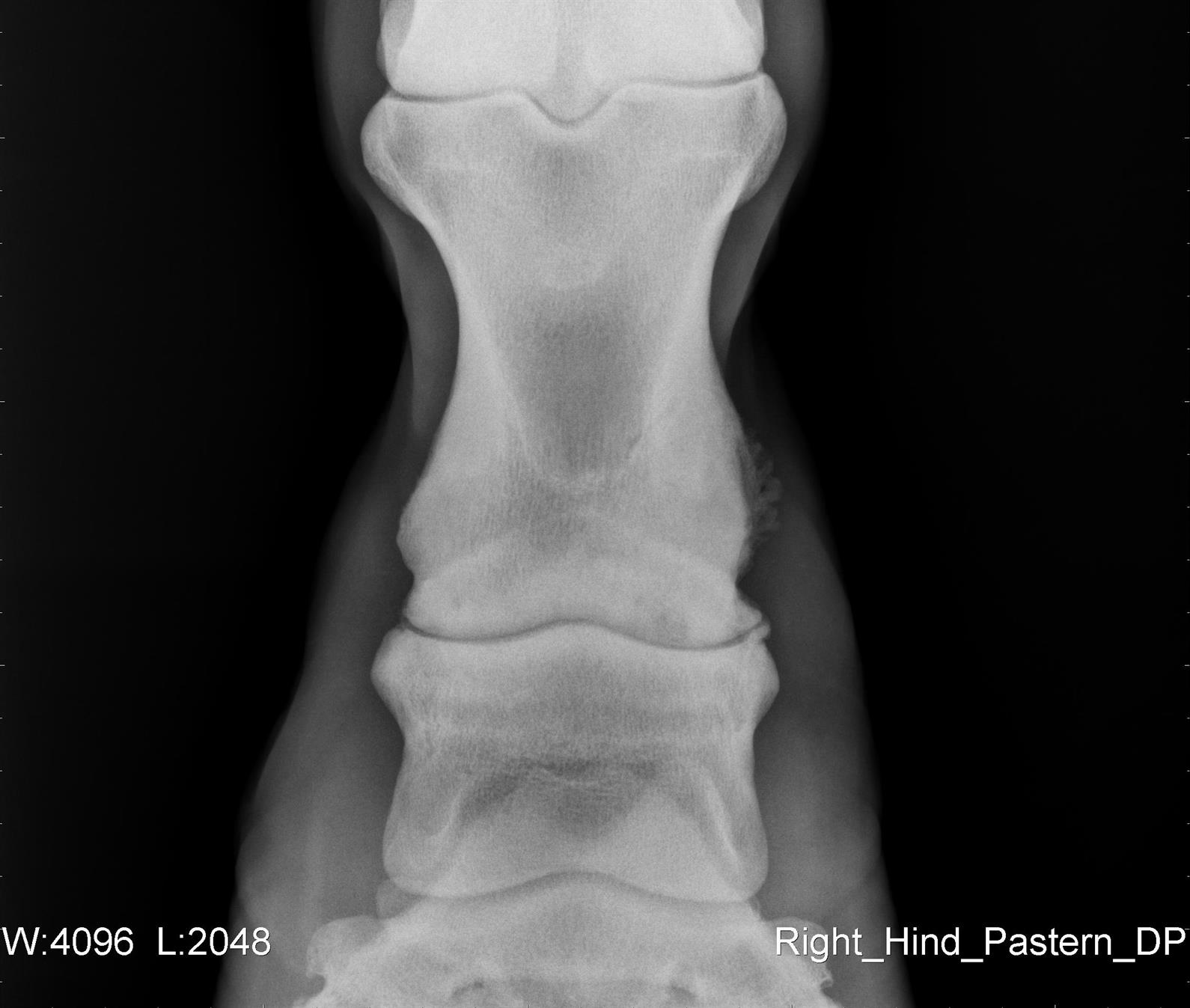Ringbone is a disease that does not discriminate; horses of all breeds, ages, and functions can be at risk. An arthritic, degenerative disease of the pastern and coffin joints, ringbone comes in two types. High ringbone affects the pastern, and low ringbone affects the coffin.

Similar to arthritis in people, ringbone develops in our equine counterparts from causes such as injury, infection, and normal wear and tear. There are also developmental factors to be aware of, including bone cysts and osteochondrosis (OC), which causes abnormal maturation of joint cartilage in young horses.
The first symptom of ringbone that owners often see is lameness. “In advanced cases, there can be swelling above the coronary band (over the pastern or coffin joint), which can be a lot of different things, but ringbone is one of the things you have to rule in or out,” explained Dr. Liz Barrett of Hagyard Equine Medical Institute in Lexington, Ky.
Pushing on the swollen area would not necessarily be painful, as ringbone is a bony change, but when the affected joints are flexed, they can react painfully. Another sign of ringbone is that the area would be hard to the touch due to the bony proliferation that has developed as a result of the ringbone.
Your veterinarian will check for these symptoms in a lameness examination. The next step in making a diagnosis is to numb different parts of the leg to localize where the pain is coming from. “In a lameness exam, we typically start by blocking the foot and then move up to block from the fetlock down,” said Barrett. “Then, if the lameness is improved after we block one of these areas, we would take radiographs. Radiographs would allow us to diagnose if the horse has ringbone and if it is high or low.”
Care and treatment post-diagnosis depends on the severity of the arthritis, its duration, and what the horse’s function has been. Recommended changes in exercise are common, and there are several possible courses of treatment, depending on each individual case.
“Treatment can range from a topical anti-inflammatory, such as diclofenac, or systemic anti-inflammatories, like phenylbutazone and firocoxib,” Barrett said. Other treatment options include injecting the affected joint to help slow arthritis or decrease the pain felt from arthritis.

Finally, the joint can be fused to decrease the pain associated with the cartilage loss that occurs with arthritis. For high ringbone, the pastern joint can be fused either chemically using an alcohol injection, or surgically, with the potential for keeping the horse athletic. Alcohol injections are the latest method for fusing the pastern and coffin joints. “You inject alcohol to kill the cartilage and cause the joint to fuse,” explained Barrett.
In low ringbone, the coffin joint can also be fused surgically to help make a horse pasture-sound. The pastern joint is a low-motion joint when compared to the high-motion coffin joint, allowing for an increased likelihood that a horse with high ringbone could still be ridden after joint fusion.
But there are no guarantees. “It’s a pretty frustrating and difficult-to-treat problem,” said Barrett. “Some cases respond quite well, and that’s why we start with the small things; other cases won’t respond well.”
It is difficult to predict how ringbone will progress on any given horse, but Barrett recommends starting with basic options first before moving towards injections or surgery, where there is greater investment and risk, while the outcomes are still variable. The goal is ultimately to keep the horse comfortable.
Understanding the challenges and uncertainty that come with a ringbone diagnosis highlights the importance of a pre-purchase exam when you are ready to buy, says Barrett. If a pre-purchase exam turns up evidence of ringbone, it’s always wise to discuss the finding, along with any other potential issues, with your veterinarian before moving forward.
Want more articles like this delivered to your inbox every week? Sign up here to receive our free Equestrian Weekly newsletter.
This article is original content produced by US Equestrian and may only be shared via social media. It is not to be repurposed or used on any other website aside from usequestrian.org.


